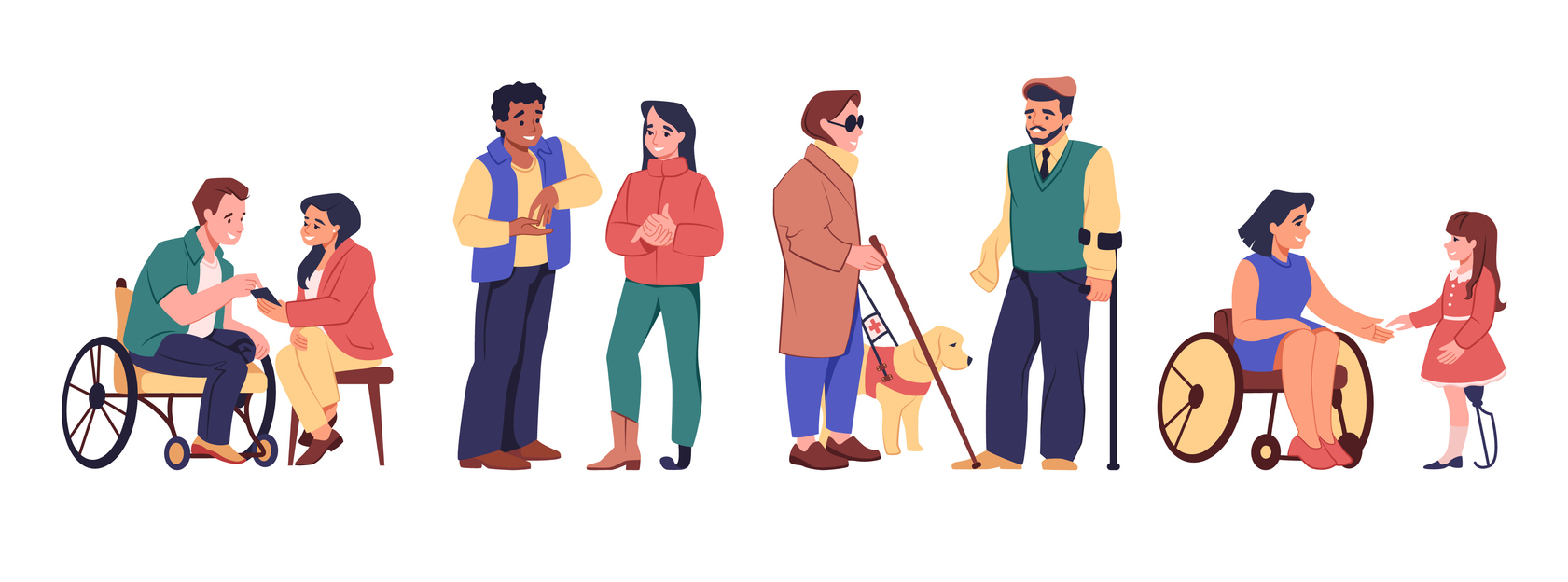Disability and Reproductive Justice 101

When we think about reproductive justice, practices like advocating for bodily autonomy, health care access, and comprehensive sex education come to mind as familiar parts of the movement. [1] These are things we maintain everyone should have access to these things, so how do we ensure these values extend to marginalized communities?
For disabled people, the additional barriers can extend from medical irresponsibility or malpractice, to lack of services and accessibility, to valuing formal diagnoses over lived experience. Services and accommodations able-bodied people don’t have to think twice about are hard-fought for people with many different kinds of disabilities.
As someone who has an invisible disability, I am constantly reminded of not only how capitalism necessitates ableism, but also how movement spaces often are not disability inclusive. And I’m not just talking about physical circumstances like event spaces. Even among people who I’m aligned with in values, there is a gap of understanding how I as a disabled person show up. This discrimination is systemic, and it manifests in forms of prejudice like ableism.
This erasure and/or discrimination of disabled people stems from ideas and practices that thrived during the eugenics movement in the early 20th century: This movement employed white supremacy to classify disabled people as inferior to the able-bodied population for centuries. As such, ableism refers to the phenomenon of favoring normal (read: abled) people over those with physical and/or mental disabilities.
This idea of “normal” is ableist in itself because it operates on the assumption that all bodies and minds should meet a certain standard. We see this in relation to both physical and mental health, whether it’s not providing accessible public transportation for those with mobility devices or criminalizing mental illness. [2]
Another remnant of the eugenics movement is the belief that disabled people are by default, asexual beings who are “unfit” [3] to become parents or make autonomous choices about our own bodies. Reinforcing the idea that we are innately unable to make our own choices only serves to infantilize us and remove our agency, not just publicly, but privately as well. The troubling assumption that disabled people do not need information regarding their sexual and reproductive health could not be further from our lived reality. In fact, the overlap between these movements is an entry point to understanding how there can be no reproductive justice without the inclusion and incorporation of disability justice too.
Shame and stigma around abortion are pervasive regardless of ability, but ableist beliefs and practices add layers to this intersection. For example, debating a disabled person’s choice to have or not have an abortion reinforces the white supremacist idea that disabled people are not capable of making autonomous choices.
It is also common for anti-abortion lawmakers and activists to weaponize and exploit the disabled community to push their anti-abortion agenda. They frequently allege that abortion advocates are ableist because we allegedly target fetuses that may have anomalies more than ones who do not. This allows them to misrepresent disability justice as a value of the anti-abortion movement, when we know they are only using it to attack abortion providers, activists, and patients.
We know that disability justice is about combatting stigma and creating comprehensive care processes, developing and disseminating accessible resources and information, and working to that eliminate the discrepancy in how difficult or easy it is to navigate reproductive health care as disabled people.
Living in a safe and sustainable community is essential to feeling empowered in your decisions. Understanding that disability justice and reproductive justice intersect doesn’t stop at making our community gathering spaces that comply with the Americans with Disabilities Act (ADA), or providing captions for a meeting. It means working to dismantle administrative burdens [4] that prevent disabled populations from accessing support to cover daily necessities like food, housing, and medical treatments. It means ensuring that abortions do not cost more for disabled people. It means providing comprehensive sex education to disabled people. It also means fighting for less restrictive alternatives to guardianship which often restricts disabled adults from making decisions about their reproductive health care.
Whether it is a physical or mental disability, all of us deserve a seat at the reproductive justice table. These movements cannot be successful without one another, and practicing that can start with something as small as being intentional about language. It may seem inconsequential, but how we communicate with one another can foster habits that are exclusive and discriminatory, like joking that people we disagree with have personality disorders. A great entry point is learning about the difference between identity first vs. person first language. [5] For example, one may want to be referred to as a “person who is blind” while another may want others to describe them as “a blind person.” Everyone’s relationships to their bodies are unique, so learning where they may land on language can open your mind to so many empathetic, caring, and supportive ways to communicate with and about others.
There’s no shortage of reading material about the history of institutionalized ableism, and having background knowledge allows you to show up for the disabled people in your life in a much more meaningful way. The myriad of disabled experiences has also been documented through many instances of art and performance that both provide perspective and platform disabled artists. [6]
It’s up to you to apply the knowledge you gain about disability justice to all movements around you. I urge you to challenge yourself about what you may have been taught about how disabilities are setbacks to overcome, and to find wonder in the millions of different ways you can help imagine and create a radically accessible and accepting society. Together and with consideration of the different lives we all live, our power is unstoppable.
Sources:
- https://www.sistersong.net/reproductive-justice
- https://www.c-q-l.org/resources/newsletters/mad-pride-reducing-shame-stigma-and-sanism/
- https://www.genome.gov/about-genomics/fact-sheets/Eugenics-and-Scientific-Racism
- https://www.americanprogress.org/article/how-dehumanizing-administrative-burdens-harm-disabled-people/
- https://www.nih.gov/about-nih/what-we-do/science-health-public-trust/perspectives/writing-respectfully-person-first-identity-first-language
- https://www.sinsinvalid.org/mission
